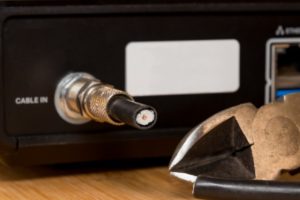Small PBS, NPR, and dual licensee stations operate in a niche market, catering to audiences that value quality programming and thoughtful commentary. These stations, however, face unique challenges in reaching and engaging their audience in today’s digital age. The key to unlocking the full potential of these stations lies in unleashing the power of marketing.
Challenges Facing Small PBS, NPR, and Dual Licensee Stations
Small stations often operate in a bubble, relying on traditional broadcast and social channels to reach their audience. However, the reality is that viewership and listenership are limited by age and sometimes ethnicity. These stations also face the challenge of acquiring new audiences, as their programming may not appeal to a broad range of viewers.
Another challenge for these stations is the shift toward digital viewing and listening. In 2023, for the first time, digital viewing and listening overtook traditional broadcasts, creating a need for small stations to shift their marketing strategies toward digital channels. This shift requires a deep understanding of the digital landscape and the ability to effectively leverage digital marketing tools to reach and engage the audience.

Stations, however, face unique challenges in reaching and engaging their audience in today’s digital age.
Strategies for Small PBS, NPR, and Dual Licensee Stations
Marketing is critical for small stations to overcome these challenges and unlock growth and success. A strong marketing strategy can help small stations build their audience, establish themselves as thought leaders, generate revenue, and inspire their audience to take action. Here are some strategies for small stations to consider:
Embrace Digital Marketing: Small stations need to shift their marketing strategies towards digital channels to reach their audience wherever they are. This requires a deep understanding of the digital landscape and the ability to effectively leverage digital marketing tools to create compelling content, reach new audiences, and build a loyal following.
Focus on Niche Marketing: Small stations should focus on reaching a niche audience that values quality programming and thoughtful commentary. This requires a deep understanding of the audience’s preferences, interests, and behaviors to create programming that resonates with them.
Leverage Partnerships: Small stations can leverage partnerships with other organizations and businesses to expand their reach and build a loyal following. Partnerships can also help small stations generate revenue through sponsorships and other opportunities.
Create Compelling Content: Small stations should focus on creating compelling content that engages their audience and inspires them to take action. This requires a deep understanding of the audience’s preferences and interests, as well as the ability to create content that resonates with them.
Additionally, here are a few digital strategies that PBS and NPR can employ to break through the clutter of digital marketing:
Develop Personalized Marketing Campaigns: Personalized marketing campaigns can help small stations connect with their audience on a deeper level. By leveraging data analytics and audience insights, small stations can create targeted campaigns that speak directly to their audience’s interests and needs. This approach can increase engagement and loyalty among existing viewers and listeners and help attract new audiences.
Use Influencer Marketing: Influencer marketing is a powerful way to reach new audiences and build credibility. Small stations can partner with influencers in their niche, such as local bloggers or thought leaders, to promote their programming and build a loyal following.
Create Engaging Social Media Content: Social media is a powerful tool for small stations to connect with their audience and build a community. To stand out in a crowded social media landscape, small stations should focus on creating engaging content that is shareable, relatable, and visually appealing. This can include behind-the-scenes glimpses of the station, interviews with staff or guests, or interactive polls or contests.
Leverage Virtual Events: Virtual events are a great way to engage with the audience and build brand awareness. Small stations can host virtual events, such as webinars, panel discussions, or live streams, to connect with their audience and offer unique programming. Virtual events can also provide an opportunity for small stations to collaborate with other organizations and businesses, further expanding their reach.
The Bottom Line
Small PBS, NPR, and dual licensee stations face unique challenges in reaching and engaging their audience in today’s digital age. The key to unlocking their full potential lies in unleashing the magic of marketing. By embracing digital marketing, focusing on niche marketing, leveraging partnerships, and creating compelling content, small stations can build their audience, establish themselves as thought leaders, generate revenue, and inspire their audience to take action. It’s time for small stations to embrace the power of marketing and watch their stations soar to new heights!





